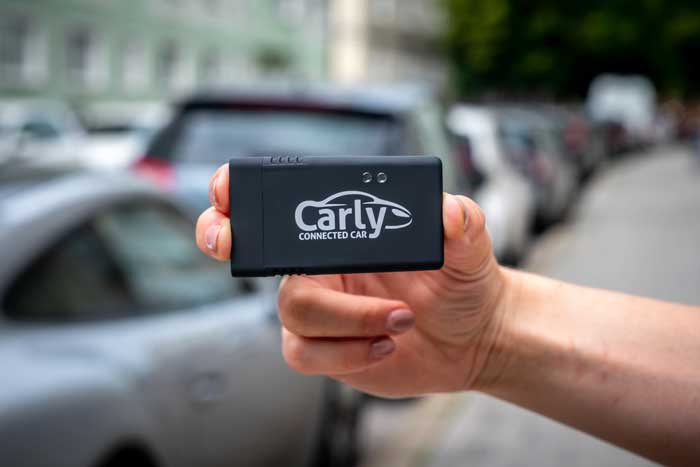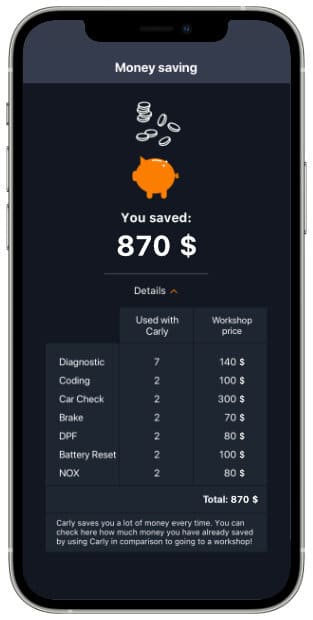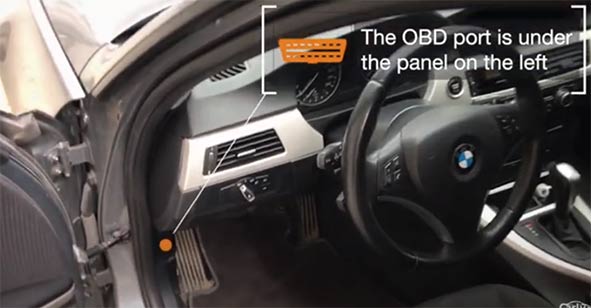If you are looking to get more control over your car and save money on maintenance, you’ve made it to the right place. We’ll introduce you to a small yet powerful tool that every car owner needs: an OBD reader! (aka, OBD2 scanner)
With an OBD reader, you will finally know at all times what is going on with your car. And depending on the OBD reader that you get, you can even:
- Personalize your car through car coding
- Read real-time data
- Avoid costly repairs by performing diagnostics
- Conduct your own maintenance
- Detect car scams
The best part is that you can get your OBD reader for an affordable price and avoid relying on a car mechanic at all times! Now let’s dive into it to understand what is an OBD reader and what you can do with it.
What is an OBD reader?

OBD stands for onboard diagnostics. An OBD reader (also called a diagnostic scanner or scan tool) is a vehicle diagnostic device that can be used to read the error memory and data that is recorded on your vehicle systems.
Basically, an OBD reader allows you to establish a connection between your car and a mobile app or diagnostic software. Once the connection is established, if you are using a mobile app, you can easily access all of your car’s data from your phone!
Additionally, if you do not own an OBD reader, you can carry out diagnostics for your vehicle at a service shop for a fee.

They usually use a handheld device, advanced scanners, or OBD cables with a computer. But usually, these tools require more complex equipment are expensive.
So, for beginners and even professionals, OBD readers are the most convenient out of all, since they are:
- Pocket-sized (unlike handheld scanners or heavy OBD cables)
- Easy to use
- No additional diagnostic equipment (ex. computer software, cables)
- Let you do more than just diagnostics
Now that you have an overview of what an OBD reader is, we will show you what you can do with it and how it can help you to keep your car in better shape.
How does an OBD reader work?
Every modern vehicle has a ‘fault memory’. This memory is responsible for storing technical defects or any trouble code that arises.
So with an OBD reader, you can access the data stored in the fault memory, and read out the fault codes in order to correct them.
A common misconception is that all error codes are bad. However, it is quite normal that cars have error codes.
There are codes that vary from manufacturer to manufacturer, but having them present is quite normal. Only a handful of error codes can lead to serious complications.
The most critical ones are engine codes since the engine is one of the main systems of a car and repairs are usually expensive. An example of a trouble code related to the engine is the check engine light. However, if you perform diagnostics on a daily basis you can easily save money on car maintenance and repairs.
How can I read error codes with an OBD reader?

Error codes can be easily read out using an OBD reader and its corresponding app. The error codes will then be displayed on your screen and you will be able to clear them as well.

In the case of the Carly app, you can also see all the code definitions for every fault and get deeper insights into what they stand for.
If you use an OBD scanner often and carry your own diagnostics every 2 months, you can end up saving thousands of dollars per year on vehicle repairs.

What can an OBD reader tell you?
With an OBD reader, you can read out a lot of data. However, the type of data depends on the OBD scanner and mobile app that you are using.
The most common data that OBD2 scanners let you read are:
– Diagnostics (readout error memory) and/or
– Real-time data
There are some dedicated scanners that only provide this data related to the engine. This feature is usually called “OBD level diagnostics”. So for example, you will only be able to read engine-related codes such as the check engine light.
On the other hand, there are other OBD2 scanners that let your read data for every system of your car, and not just about the engine. This feature is called “Manufacturer-level diagnostics”. So for example, you will be able to read fault codes related to other critical systems of your car such as ABS, airbag, transmissions, and more!
Additionally, other OBD2 scanners let you do more than just reading out data. For example, customize your car through car coding, perform basic maintenance repairs, and detect car scams.
What does the Carly OBD2 Bluetooth reader and app do?
The Carly app allows you to get a lot out of your car for little money by reading out the data transferred via the OBD reader.
And in many ways, the Carly Universal Adapter is unlike other OBD2 scanners. This is because, besides diagnostics, you can access many other features that are typically only included in a professional or expensive scanner.
Used car check
For example, the ‘used car check’ feature is always helpful if you want to buy a new car and want to check if you are not being scammed and being part of mileage fraud. So, you can really look under the hood and get a better feeling for the condition of the car, avoiding negative surprises.
Coding

Moreover, with the car coding feature, you can personalize your car’s functions and make it more unique from the comfort of your own home. You can code the welcome lights, deactivate the start-stop function, and more! With Carly, time-consuming (and expensive) workshop visits are a thing of the past.
Car maintenance
With the car maintenance feature, you can perform basic repairs yourself that usually, mechanics can charge you (a lot) for. For example, performing a vehicle battery reset is easy if you have the proper guide to follow! And with Carly, this is now possible.
Usually, only a professional automotive scanner that costs over $3,000 would include all of these advanced features. So the Carly OBD2 reader is much more affordable than the professional scanners that repair technicians would use.
What is the difference between OBD and OBD2?
The OBD2 interface is used in newer cars and was introduced in Europe in 2001 and 2004 respectively in order to have a uniform system for cars. In principle, it has the same purpose: It serves as an interface between the ECUs and the diagnostic device. However, there is a big difference.
Previously, only certain diagnostic devices could access certain cars, for example, an OBD code reader from BMW only worked with BMWs, because each car brand had a different connection. This made it difficult for workshops to make diagnoses for several car brands.
In the USA, the OBD2 connector was actually introduced in 1996 to standardize the system. That’s why you’ll find an OBD2 plug for cars from North America built after 1996, while a 1996 car from Germany will still have an OBD plug.
How do I know if my car is OBD2 compliant?
Most OBD2 readers are only compatible with car built-in 2001 or later (gas/petrol) or 2004 or later (diesel).
If you have a vehicle 1996 on, you might need a special extension to use the OBD reader.
Additionally, depending on the OBD reader, you might only be able to use it on selected car brands only. Therefore, make sure that your car is compatible with the scan tool that you are interested in.
In the case of Carly, the Universal Scanner can be used with most car brands and the majority of vehicles manufactured from 2001 onwards. So, for example, if you have a BMW and a VW in your garage that was built after 2001 and 2004 respectively, you only need one reader instead of two.
OBD3 – reality or a pipe dream?
Currently, if your OBD reader detects diagnostic trouble codes in your car, you will see a warning or a light on your dashboard. However, you can still decide for yourself if and when you will have the part replaced.
At the latest, a mechanic will check on it during your next scheduled workshop visit.
However, with OBD3, deciding to wait would no longer be possible. Because when an error code (such as check engine light) is detected, a notification would automatically be sent to the competent authority, which would then give you a deadline for replacing the defective part. If you do not meet the deadline, you would be liable for a fine.
Bypassing the system would not be possible because the error code wouldn’t go away until you replace or repair it.
The United States is already a few steps ahead of Europe here. OBD3 could be used there as early as in the next few years. Whether or not it will be implemented in Europe at some point is unclear.
Where is the OBD interface located?
The OBD interface, or diagnostic port, is usually located under the steering wheel, but this varies from manufacturer to manufacturer.

In older vehicles, the interface can also be in the trunk or near the handbrake. Once you have found the access port, you can easily plug the reader in and the connection between the car and the diagnostic device will be established.
After that, the error memory can be read out and the different error codes will be displayed on your screen. Normally, the error codes are displayed in a code that can only be deciphered after an internet search, which will cost you a lot of time, and you have to decide which information to trust.
With Carly, you’ll immediately see what’s wrong and you don’t have to spend hours searching on the internet.
Can you drive with an OBD reader plugged in?
Yes! It is absolutely safe to leave your diagnostics scanner plugged into your car’s OBD port. With other scan tools such as handheld scanners, you don’t have the option of leaving it plugged into your car.
Which OBD reader is the best?
Value for price
The best scanner tool is the one that lets you access the most features, with accuracy, and at a great price. Some OBD2 scanners only focus on diagnostics, whereas others also include additional functional features such as car coding and real-time parameters.
Equipment
Some OBD2 scanners require additional equipment, such as cables or a computer to run the diagnostics software. However, the most convenient option is to get a wireless scanner that can connect to your phone over Bluetooth.

Compatibility
This brings us to the next point for choosing your OBD reader! Make sure that the diagnostics scanner and app that you select are compatible with your phone. Some diagnostic scanner apps might only be compatible with Android or Apple devices.
Additionally, make sure that your car model is also compatible with the scanner since some OBD2 scanners are only compatible with certain car brands.
Warranty
Finally, one last point is to consider the warranty that is included in your purchase. It is very common for most OBD2 scanners to include a short 1 to 3-year warranty. However, OBD2 scanners are mean to last longer than that, so you should ensure to get a lifetime warranty.
In the case of the Carly app, you can use it on both Apple and Android devices and you will also get a lifetime warranty on the OBD reader.

